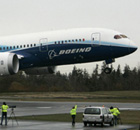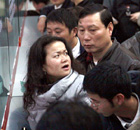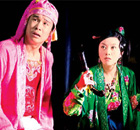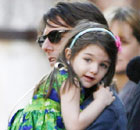Opinion
Reporter: the challenge is telling the story
By Sun Xiaohua (China Daily)
Updated: 2009-12-16 10:16
 |
Large Medium Small |
Although it is my third time to cover the UN climate change conference, I still feel confused about how to give a full picture of what is going on and make complicated negotiations understandable to readers.
Above all, how do I make my reports interesting and attractive - competing with the historically biggest number of journalists coming from China - about 100 members.
Studying all the Chinese-language reports about the conference, I find out that the most eye-catching stories are not about the negotiation process nor about the core issues.
Taking one of the most viewed stories last week, for example. It is about the head of Chinese delegation, Xie Zhenhua, who three times had trouble passing through the security check. When Su Wei, deputy head of the official delegation, complained about the treatment that Xie received during the plenary meeting, most of the Chinese media reported that as a piece of big news to show that China's rights and interests are notably neglected.
As the story was published on the country's web portals such as sohu.com and sina.com, there seemed to be widespread public dissatisfaction. And Su Wei became a hero overnight, even though the issue is not so relevant to the talks.
However, the reason Xie was blocked by the security personnel is that there was no picture on his badge. Considering the security for an international conference with more than 47,000 possible participants, the guards had to double-check.
And the contribution made by Su Wei to the climate talks is not showing his anger in this incident. Su has been engaged in climate talks for nearly two decades. He has shown his wisdom and firmness in guarding China's national interest at the negotiation table, where many media reporter seldom go.
The so-called biggest news is really nothing compared with what Yve de Boer, the UN's top climate talks official, called "the real big picture: the draft texts of Long-Term Cooperation Action (LCA) and Kyoto Protocol (KP) released Friday. The nations must now work almost round the clock in the consultations before the country leaders arrive in Copenhagen to produce a positive outcome of the conference.
However, few journalists sent back the story about the two draft texts, let alone the explanation of them, as soon as they were accessible. A few stories that did appear even misunderstood what the drafts were about.
For instance, in the LCA draft, it is said "the increase in global average temperature above the pre-industrial levels ought not exceed {2 C}{1.5C}". The brackets mean a choice in the text; however, one report explained that it was a range from 1.5 C to 2C.
Following the UN climate change conference needs teamwork with knowledge about the UN climate change convention framework, international law, scientific facts, national and international climate policies, as well as foreign affairs.
It is hard for a single reporter to cover the huge conference - it is even hard to offer comprehensive reports by a team without professional knowledge.
As for how to write an interesting story but explaining a technical issue in an understandable way, or how to catch up the latest consultation progress by meeting the deadline with jet lag, it is all about professionalism as a journalist.
(China Daily 12/16/2009 page10)







